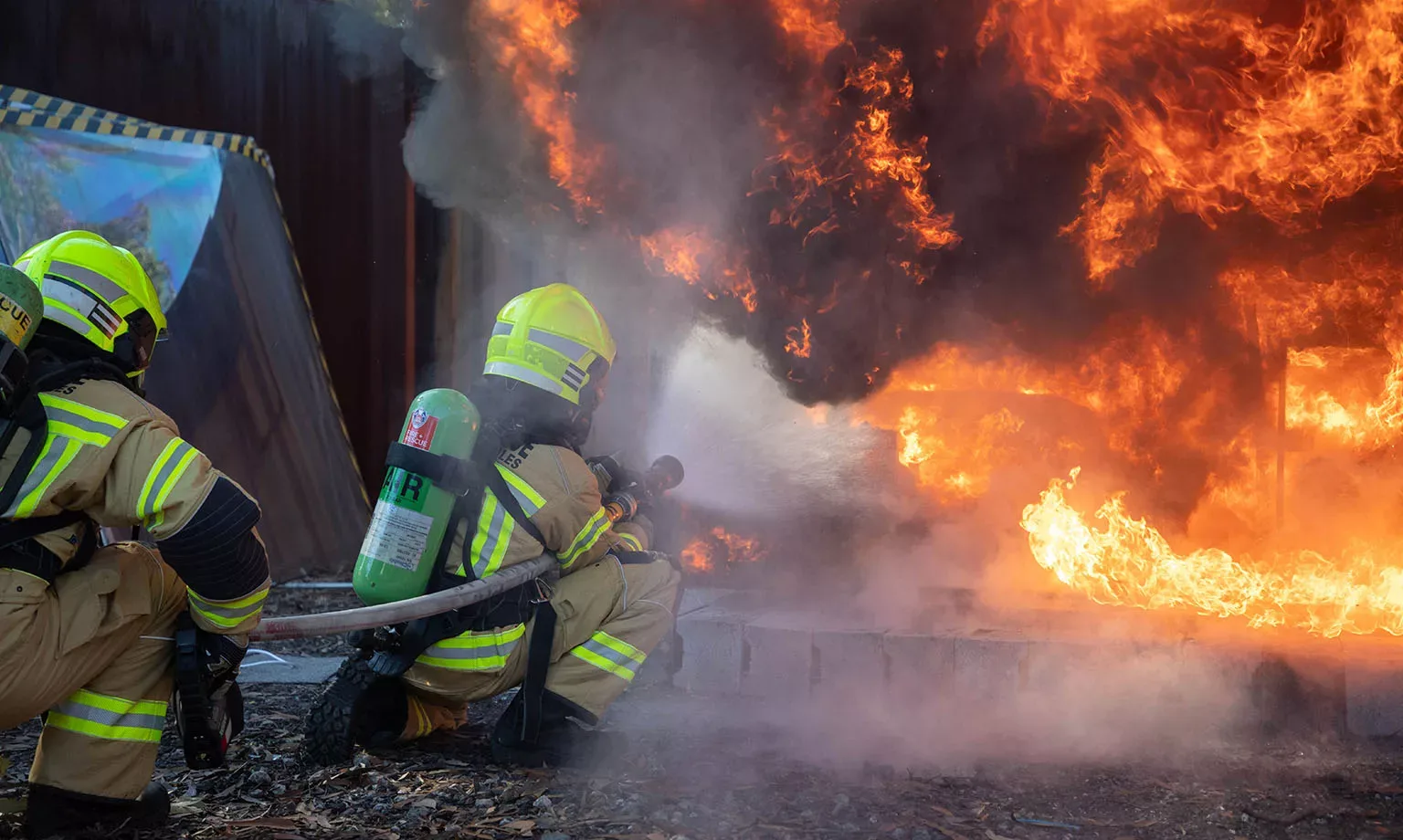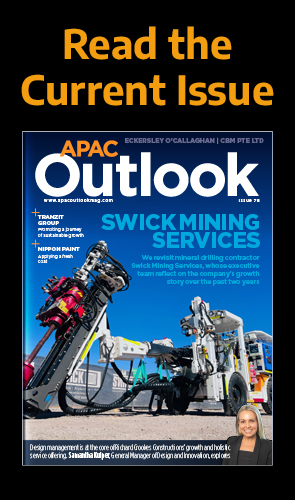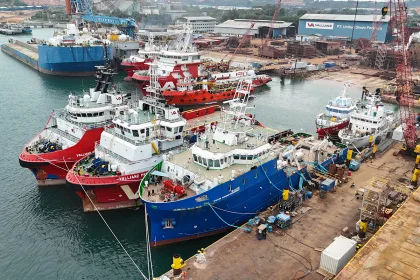The overriding purpose of Fire and Rescue NSW is to enhance community safety, quality of life, and confidence by minimising the impact of hazards and emergency incidents on the people, property, environment, and economy of New South Wales. We learn more about this admirable and impressive service from Commissioner, Jeremy Fewtrell AFSM.
PREPARED FOR ANYTHING, ANYTIME
Proudly celebrating the impressive milestone of 140 years of dedicated service, Fire and Rescue NSW (FRNSW) is the state government agency responsible for providing fire, rescue, and hazardous materials (hazmat) services in cities and towns across New South Wales (NSW), Australia.
In 1884, the Metropolitan Fire Brigade was established in Sydney. It evolved into the NSW Fire Brigades in 1910 before eventually rebranding as FRNSW in 2011.
The pivotal service is one of the key agencies involved in the response phase of most emergency or disaster events throughout NSW and is amongst the world’s largest urban fire and rescue services, as well as one of the busiest in Australia.
At present, the service utilises 335 fire stations spread across NSW, helping to protect the state’s population from emergencies involving fire, motor vehicle accidents, and other dangerous situations. FRNSW also shields its local population from the dangers of hazmat emergencies and building collapses.
The service’s highly skilled officers and support staff provide rapid, reliable help in dealing with emergencies 24/7, with the overarching aim of saving lives and reducing the number of injuries.
“We also protect the environment and try to minimise damage to property, including major infrastructure. In partnership with the community and other local services, we strive to prevent emergencies while planning and training to deal with those that do occur,” introduces Jeremy Fewtrell AFSM, Commissioner of FRNSW.
“I always wanted to be a firefighter, as many kids do, but for me there was always a deeper, personal connection as my grandfather worked for the NSW Fire Brigades after World War ll.
‘‘He was very proud of his career, and as a child, visiting him at work and getting to explore all the firetrucks and see the equipment was paradise,” he recalls fondly.
Fewtrell has worked in numerous operational roles in both metropolitan and regional locations over the last 27 years. As a graduate of the Institution of Fire Engineers, he holds a Bachelor of Natural Resources from the University of New England and a Master of Business Administration from Deakin University.
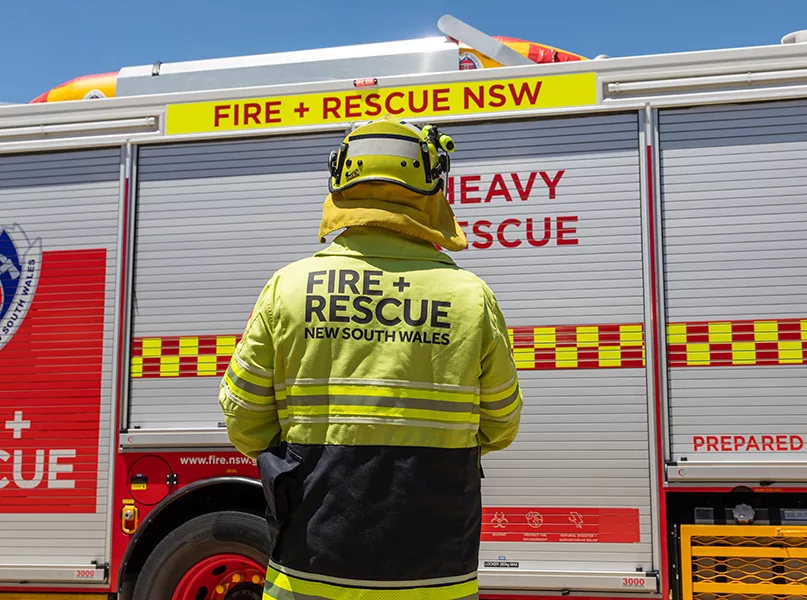
A FORCE TO BE RECKONED WITH
FRNSW is committed to building a diverse and highly skilled workforce ready and willing to serve the community with courage, care, and without judgment.
In this way, the service aims to create a culture where all employees feel safe and valued and can contribute, learn, and be their best every day.
“Our people, achievements, and commitment to the community embody a future-focused and world-class emergency service.
We are here to protect the irreplaceable and we are prepared for anything, anytime,” Fewtrell acclaims.FRNSW currently boasts 3,608 permanent firefighters, 3,214 on-call firefighters, 516 trades and administrative staff, and 4,772 Community Fire Unit (CFU) volunteers as of 30th June 2024.
“We’re really lucky to have such high-quality people in our team who all come from a diverse range of backgrounds,” he enthuses.
“We have curated a culture where people are able to come to work, contribute, and be fully supported and appreciated for who they are, the work they do, and what they bring
to the organisation.”
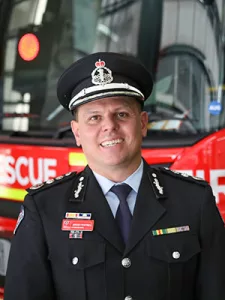
“Our people, achievements, and commitment to the community embody a future-focused and world-class emergency service. We are here to protect the irreplaceable and we are prepared for anything, anytime”
Jeremy Fewtrell AFSM, Commissioner, Fire and Rescue NSW
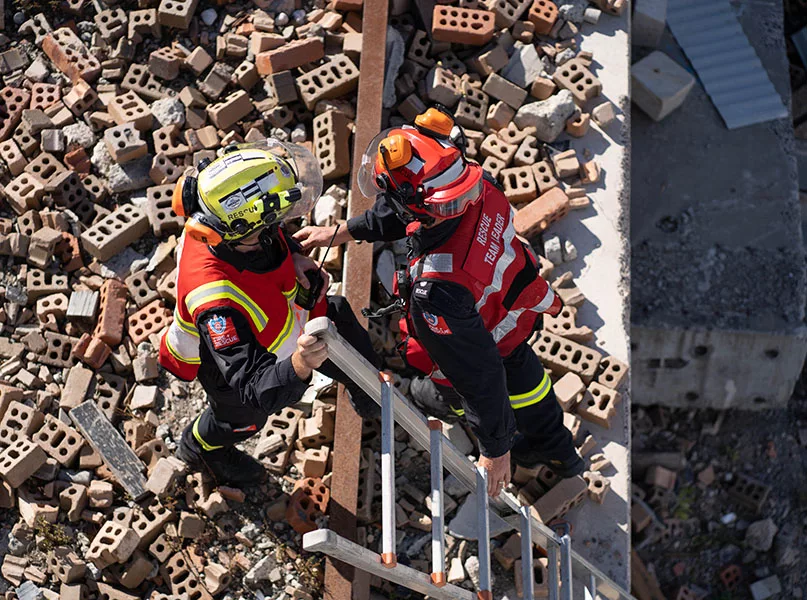
ENSURING PREMIUM PROTECTION
As well as the obvious dangers of heat, the firefighters at FRNSW regularly encounter toxic fumes, sharp objects, uneven ground, slippery surfaces, biological fluids, spilt chemicals, and electricity.
“Because of this, firefighting uniforms need to provide the best protection possible for our firefighters,” Fewtrell expands.
Typical firefighting personal protective equipment (PPE) consists of a tunic made from fire-resistant synthetic fabric, which retains its structural strength after fire exposure and resists cuts and tears.
“It provides a good level of protection without exacerbating the metabolic heat stress of the firefighter. It is designed to enable good flexibility, and the collar has a long zip to ensure complete closure of the jacket to the neck, while it also provides a high level of thermal resistance protection without being overly heavy to wear,” he adds.
FRNSW is continually reviewing requirements for PPE to ensure its firefighting staff are provided with the best quality equipment to enable them to safely carry out their work.
As such, firefighting uniforms need to be rigorously tested to ensure they can withstand the harsh environment of an emergency situation.
Workwear Group, one of its key suppliers for over a century, has created world-class clothing for services such as FRNSW and continues to outfit millions of courageous service people worldwide.
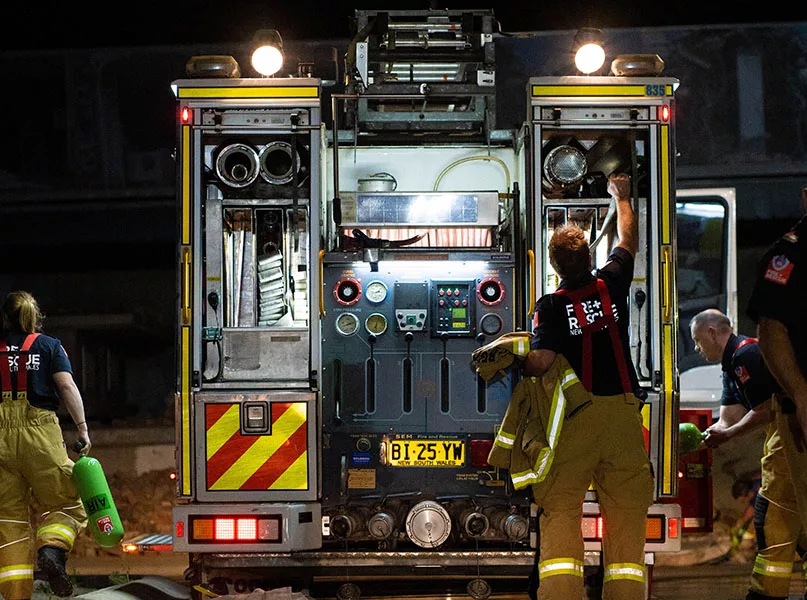
ACCELERANT DETECTION CANINE PROGRAMME
FRNSW also runs a nationally-leading accelerant detection canine (ADC) programme, the first of its kind for Australasian fire services. These specially trained dogs and their handlers can cover large areas quickly to narrow down the area for frontline firefighters to undertake fire origin and cause analysis, and the results of their discoveries at the scene can then be used by FRNSW, the NSW Police Force, and the Coroner’s Office.
The original FRNSW K9 project started in 1995 with Sabre, a German Shepherd, followed by a black Labrador, Kova, who served from 1996 to 2000. Then came Ellie, a golden Labrador donated by the Australian Customs Service in 2000 before retiring in 2008.
Today, FRNSW has three canines on active duty who attend an average of three jobs per week with their respective handlers.
As national leaders in this field, ADCs are 97 percent accurate and enjoy a high profile both internally within FRNSW and externally as a tool for fire prevention and the promotion of community fire safety messages.
“With a sense of smell 100,000 times more acute than a human’s, ADCs can detect fire accelerant in smaller concentrations than any portable scientific equipment currently available. These talented canines can even be used to sniff out traces of accelerant on suspected arsonists to support the Police investigation,” Fewtrell explains.
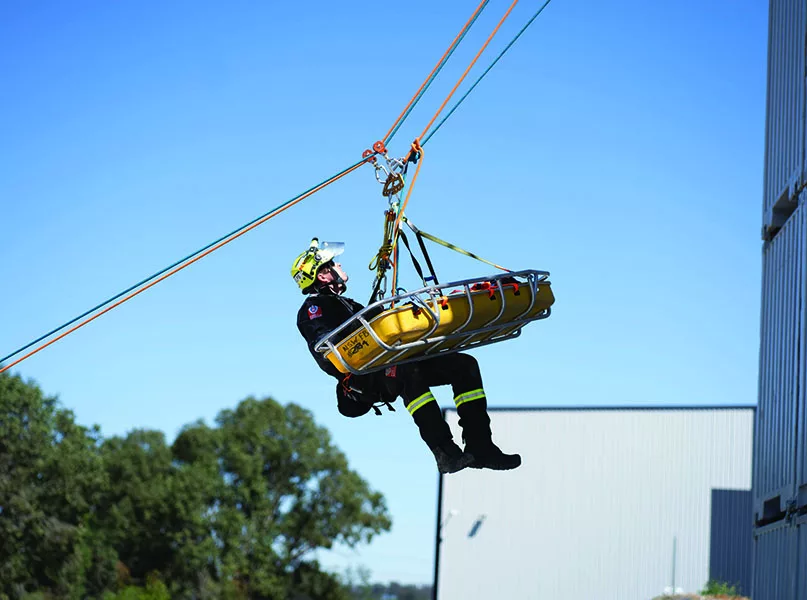
Furthermore, the dog’s quick noses can cover a scene in less than 30 minutes, saving days of human labour and avoiding the collection of additional forensic samples, reducing costs and laboratory time.
“The dogs are trained using gameplay and rewards, with handlers utilising as many different environments as possible including houses, office buildings, car parks, and bushlands to ensure that they do not become conditioned to only searching a particular type of scene,” he continues.
VAST BREADTH OF SERVICES
Alongside its urban response capabilities, FRNSW supports the NSW Rural Fire Service during and after bushfires in the local area, which have ravaged the region in recent years and present a constant and considerable threat.
“We work to prevent the occurrence of bushfires through our hazard reduction strategies and community education campaigns. Similarly, we also conduct research into factors affecting bushfire behaviour in order to continually improve our service,” Fewtrell explains.
“Another important aspect of our service is our work with communities to help them prepare for bushfire season. This includes the training and implementation of CFUs across the state,” he sets out.
In addition to the risk of bushfires, NSW has experienced flooding issues in the last two years as the length of Australia’s east coast severely impacted.
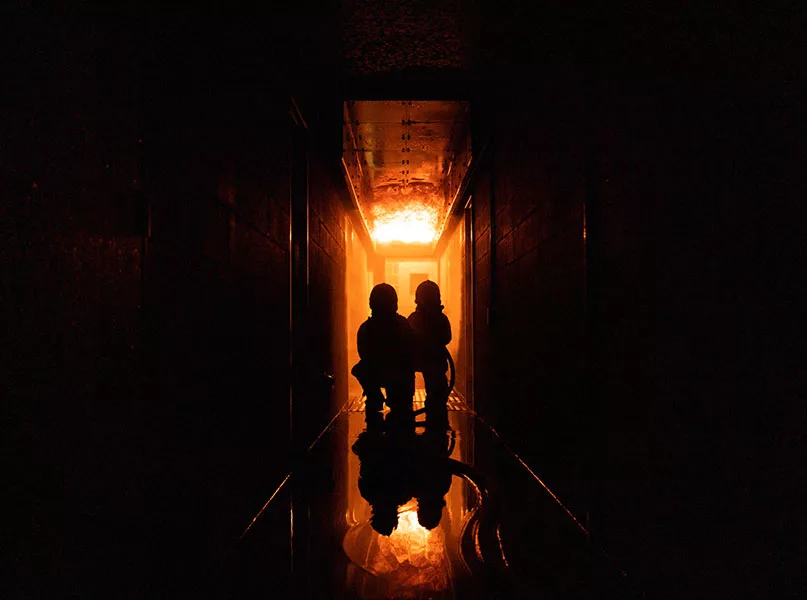
In direct response to this, FRNSW has accredited five water-based flood rescue stations and 20 land-based flood rescue stations, with 127 water-based flood rescue technicians and 565 land-based flood rescue operators now added to the service’s elite team.
FRNSW therefore provides the best possible service for its communities and has developed a deep understanding of why it exists.
“We focus on spending extra time with people at an incident and giving them crucial support, remembering the human side of our work and the impacts on those people who are having the worst day of their lives when we get called.
“The privilege of being firefighters is that we get to provide help to people, be with them when they’re at their most vulnerable, and begin to rebuild their lives,” Fewtrell finishes proudly.




